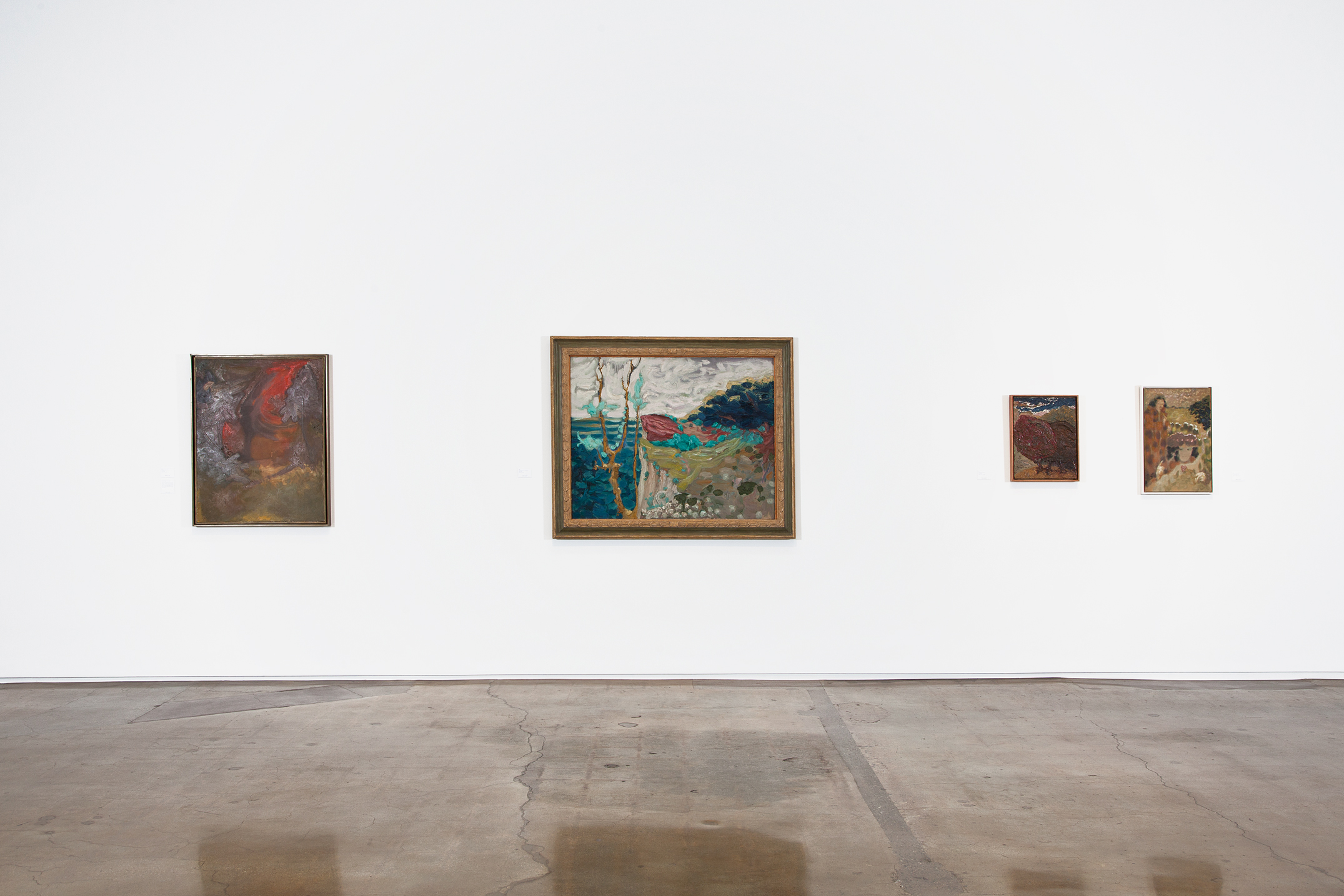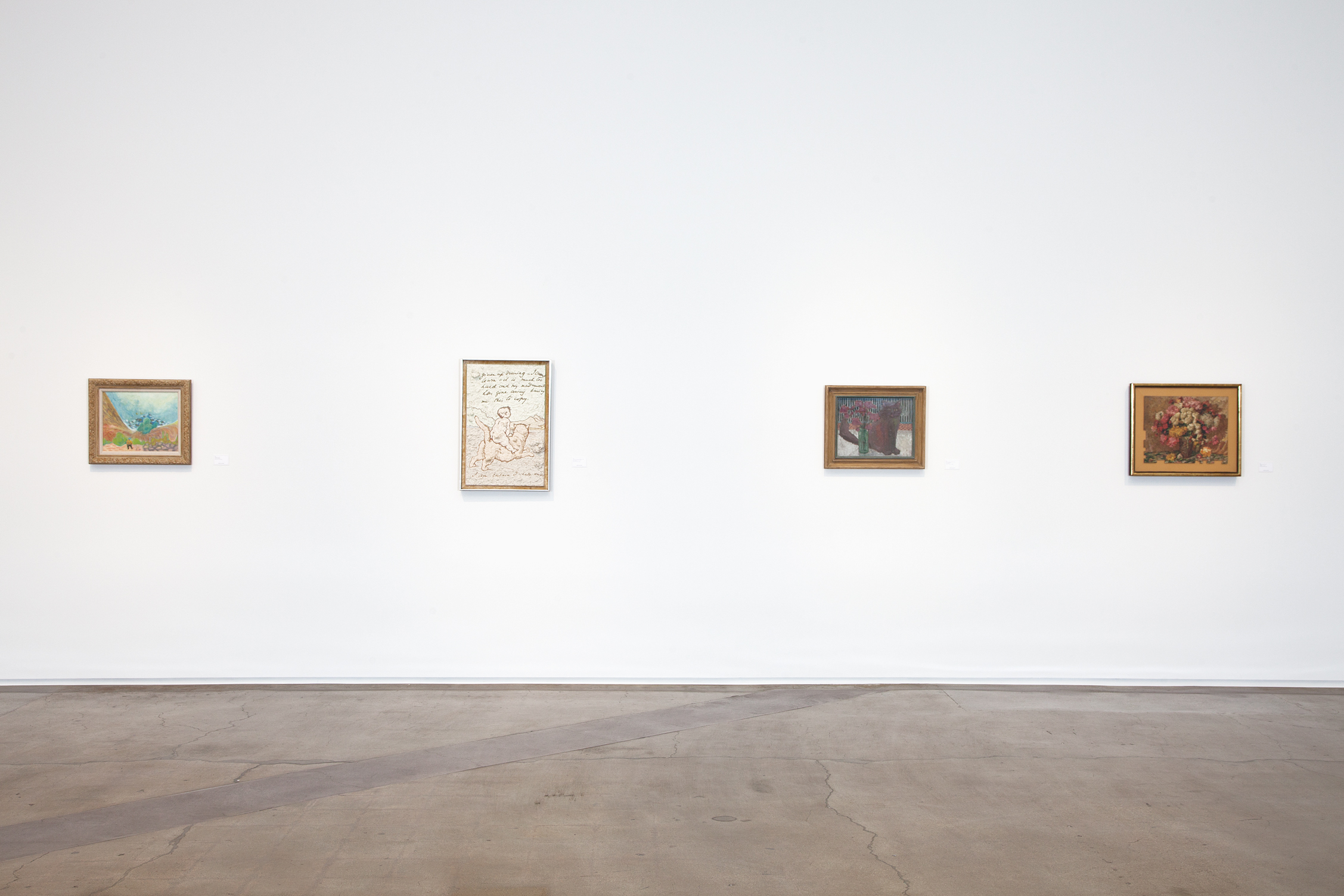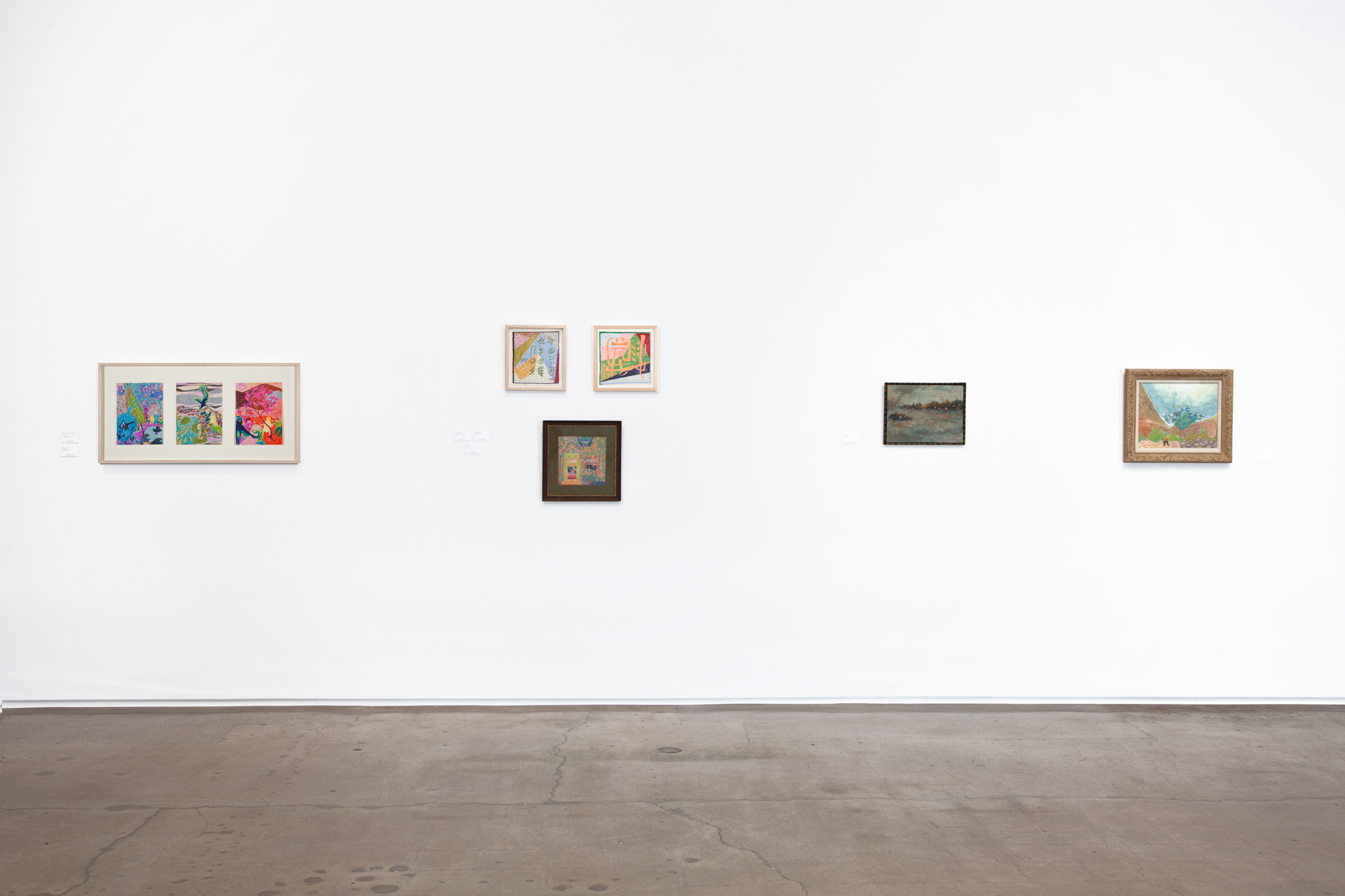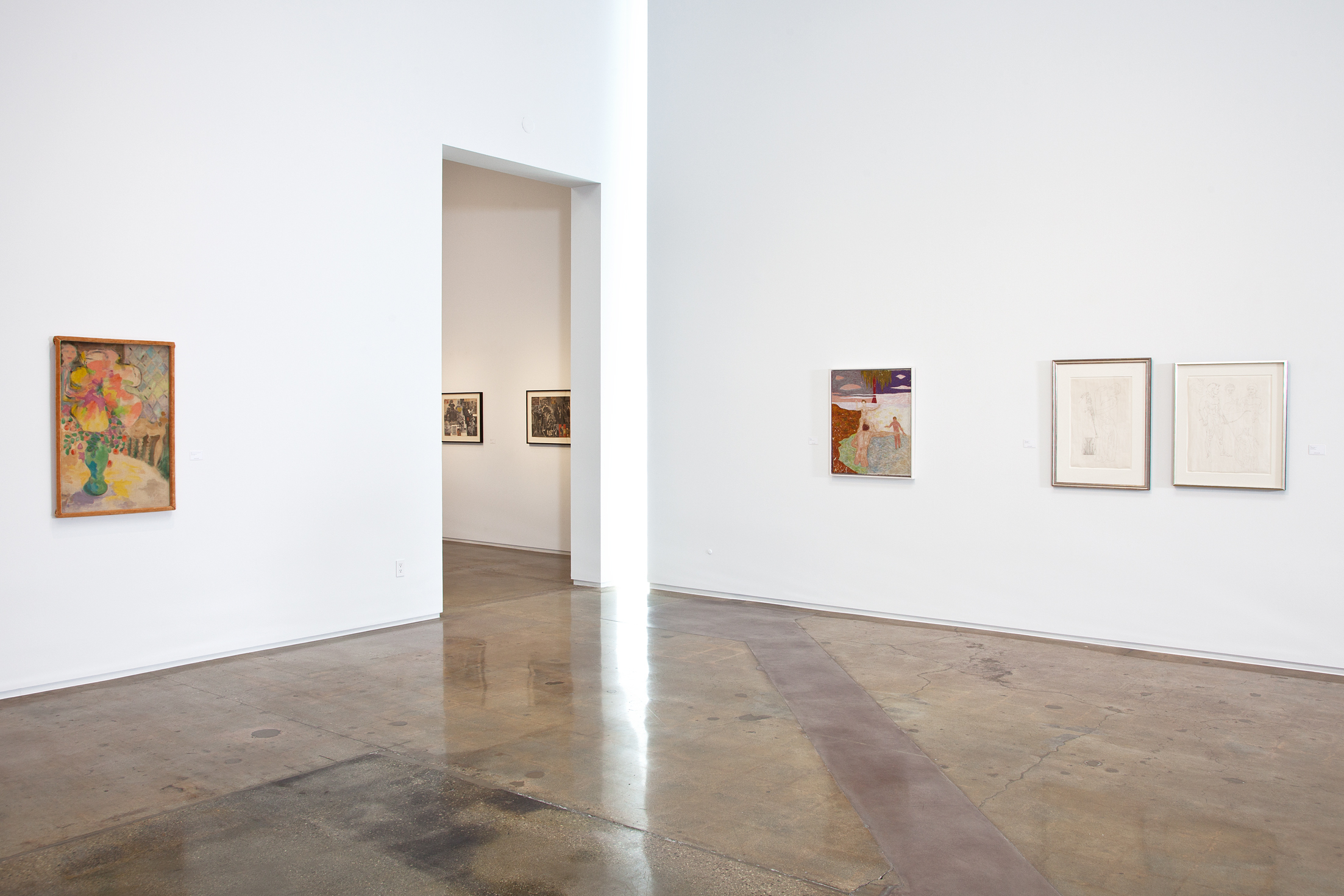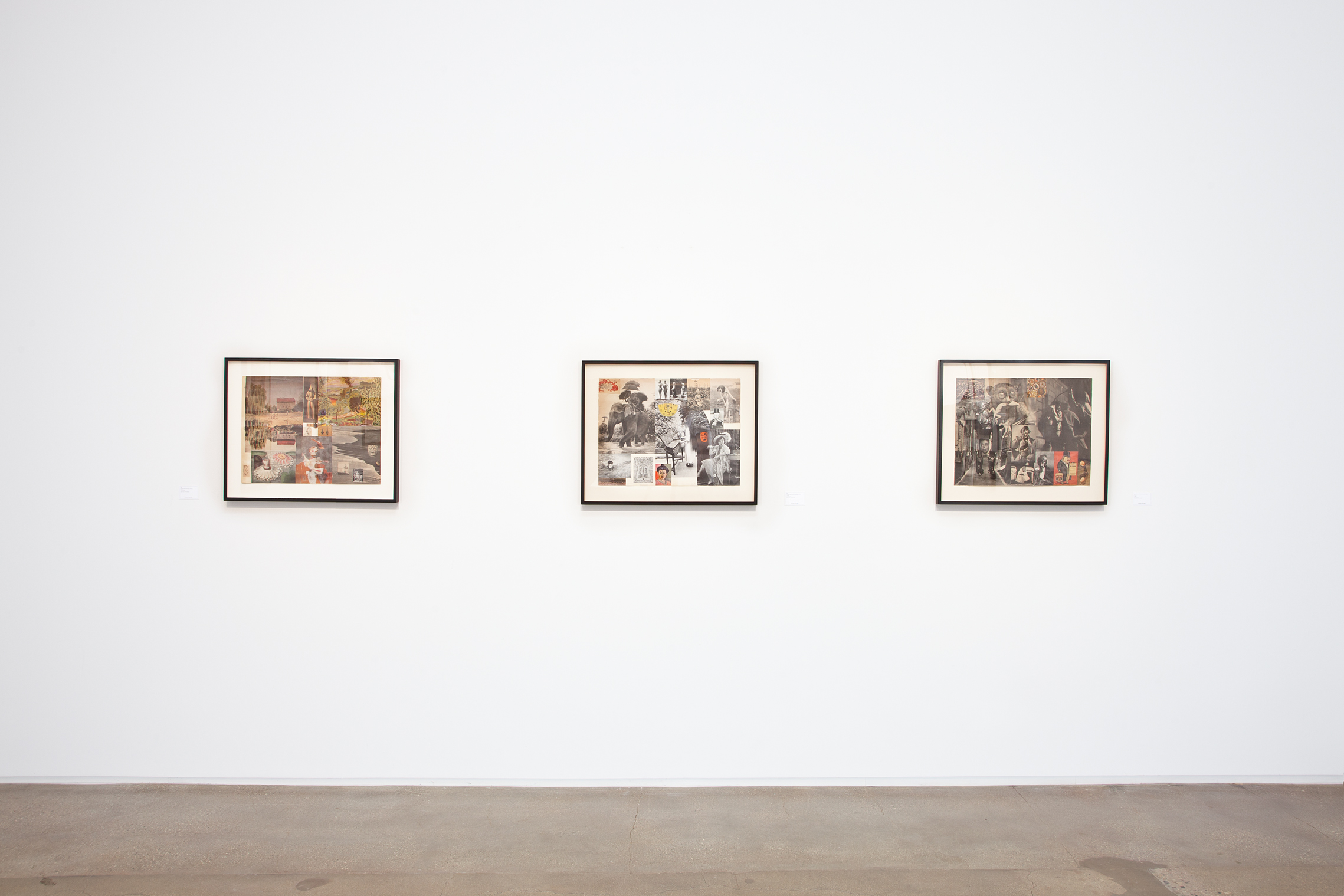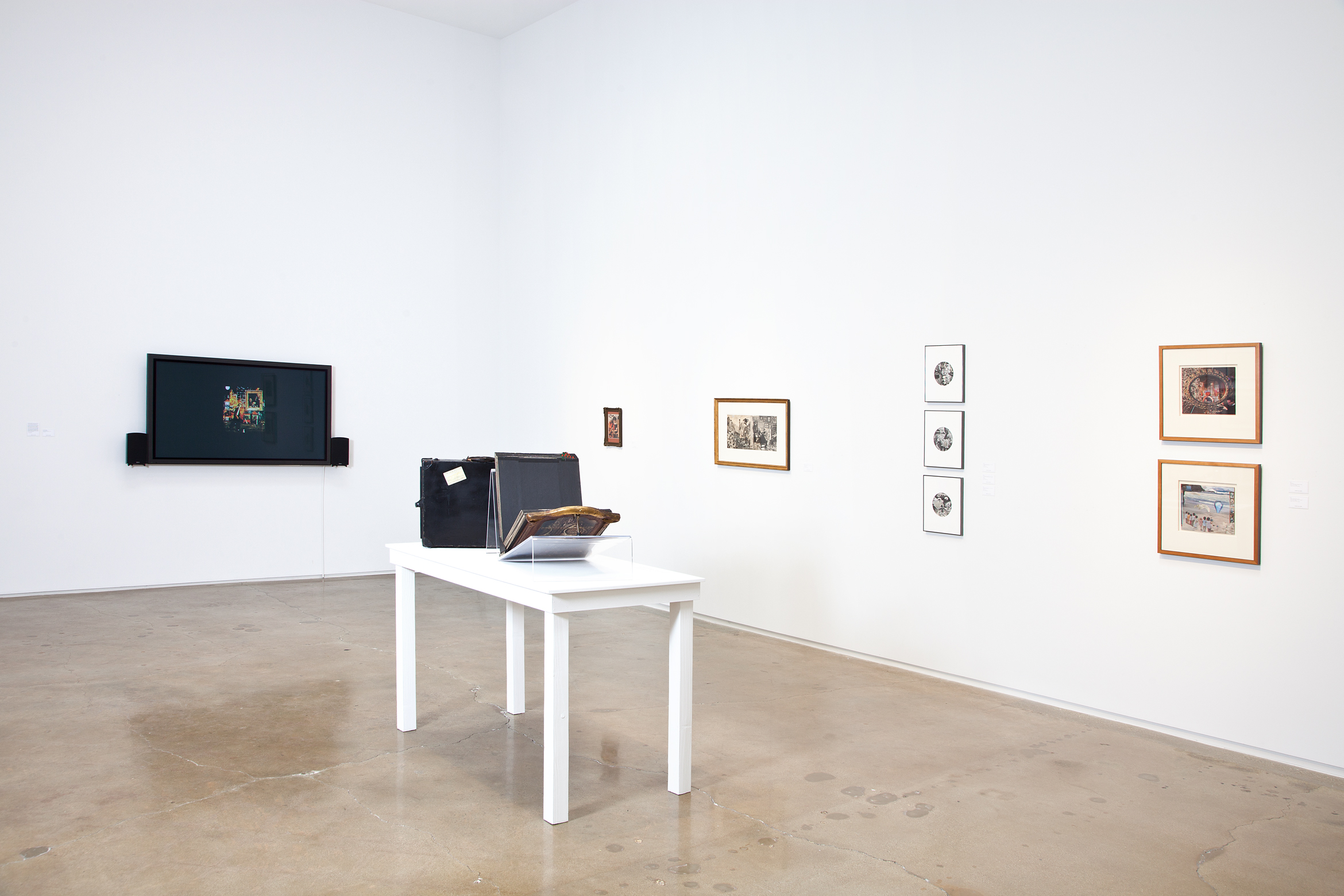Jess - Secret Compartments
Kohn Gallery is pleased to present Jess – Secret Compartments, an exhibition of works from the early 1950s to the early 1990s. This exhibition will present examples of work from Jess’ most important series – including painting (Romantic, Erotic, Translation, Salvages), Paste-Ups, as well as drawing and collaborations with writers and poets. This marks the first time this traveling exhibition, organized by Tibor de Nagy Gallery, New York, will be on view in Los Angeles.
The earliest works in the exhibition are paintings that date from the early 1950s to the mid-1950s – these paintings are generally considered Jess’ Romantic series. Created shortly after he left art school in San Francisco, and influenced by his teachers Clyfford Still and Edward Corbett, these works are colorful, impressionistically painted landscapes, sometimes with figures or moody abstractions. Here Jess foments his lifelong fascination with fantasy, legend and storytelling. From this point on, Jess’ sources and influences will grow in complexity and become an enormous personal archive, or as he called it a “constellation” compound of varied literary, scientific, historical, and mythic source material.
Also included in the exhibition are studies for Narkissos, (Narcissus) and examples from a related body of work, Jess’ Erotic works, which are homoerotic paintings with mythical allusions. The Erotic paintings can be seen as precursors to the final Narkissos, 1976/1991, a monumental pencil on paper Paste-Up, arguably one of his single most important works, now in the collection of San Francisco Museum of Modern Art. Narkissos was conceived in 1959 and completed in 1991. Jess described the making of his work as his:
“…grand obsession, and obsessions don’t always have a logical or perfect conclusion. When I made that first little drawing (1959), I saw immediately that it was a vision capable of expanding into great complexity. In the second drawing (1964), I elaborated the field of possibilities and then the Paste-Up took me years and lured me into what still seems to me to be an endless magical realm – it took well over 20 years.”,
The Paste-Up, Jess’ most notable series of works, also have their origin in the 1950s when he became aware of Max Ernst collages and the writing of James Joyce. These collages, which he dubbed Paste-Ups, in deference to their scrapbook nature, were drawn from his archive (which he added to constantly as he visited bookshops and junk stores in San Francisco). The Paste-Up allowed Jess to integrate his wide range of interests. He worked and re-worked the found images until they were woven into a tapestry. Even a small Paste-Up could be made up of over 100 separate images, that he sliced and manipulated with a special X-acto knife on a pivoting table. The Jess scholar and curator, Michael Auping, quotes Jess speaking of himself and his Paste-Ups, “Our (he and poet Robert Duncan) life is essentially a grand collage of fantastical images in books, paintings and puzzles (Jess loved elaborate puzzles) from inside the house and my imagination of the world outside the house (where Jess seldom ventured).”
Included in the exhibition is an early and important re-discovery of a sculptural piece, titled Heavy Water: a Novel or The 40 & 1 Nights or Jess’ Didactic Nickelodeon from 1955. This work is a three-dimensional flipbook, or nickelodeon--an early twentiethcentury moving-picture device that cost a nickel to operate. The work is composed of 41 individual collages on panels, hinged together like a large book and fitted into a suitcase designed by Jess. A year after the artist created this piece, he collaborated with the filmmaker Lawrence Jordan who filmed Jess’ 41 collages in quick sequence, with audio chosen by Jess (James Joyce soliloquy, an image of a mushroom cloud appears with the sound of haunted screams, and an underwater library with classical music). This film will be exhibited in this exhibition.
Curriculum Vitae
Born 1923, Long Beach, CA
Died 2004, San Francisco, CA
EDUCATION
1942 California Institute of Technology, Pasadena, CA
1951 California School of Fine Arts, San Francisco, CA

